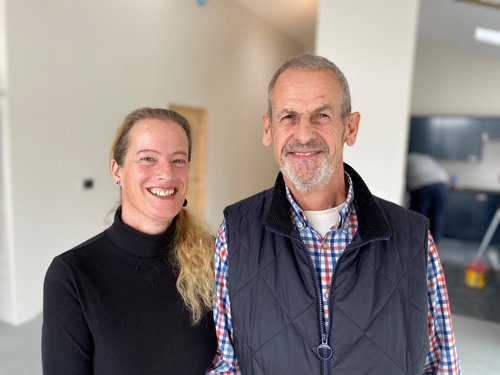A Suffolk powerhouse
A CLA couple reflect on their journey to create a zero-carbon home after being inspired by a project in Nottinghamshire. Lee Murphy reportsInspired by a community of sustainable, ecologically sound homes in Nottinghamshire, CLA members Nick and Saffy Woolley are nearing completion of their own zero-carbon performing rural home in Suffolk.
Under a Class Q permitted development, the couple developed Pilgrims Barn, a super-insulated home with very low energy requirements and zero running costs. Formerly a chicken shed, the property has been transformed with floor to ceiling glass on the southern facing elevation.
The building has been specifically designed to absorb passive heat from the sun from autumn to spring.
The property has 27kW solar panels on the roof and three Tesla Powerwalls that store 40.5KWhs of solar power for use when the sun is not shining. The system provides energy for the house and for two all-electric cars, and since April has had more than 2,000KWh of surplus per month to sell back to the grid.

Windows are triple glazed and heavily insulated. The walls and floor have an extremely impressive U value of 0.1 (a measure of the effectiveness of insulation) due to shrewd building design, while the roof has a U value of 0.055, retaining heat in winter and preventing over-heating in summer.

Saffy says the Hockerton Housing Project in Nottinghamshire had an impact: “Both of us set our hearts on building our own Hockerton-performing home. Once we’d overcome the challenge of finding a suitable piece of land, we invited two directors from Hockerton to see the site and get their views on whether it would be suitable.
“The building already had a Class Q consent to be converted to four two-bedroomed cottages in a terrace. This was then changed to a Class Q consent for one five-bedded home, which would be virtually ‘off-grid’ although connected to the grid for electricity, into which we could sell surplus energy in summer and have for emergency top-up in winter.”

All rainwater from the large roof is harvested into a 6,000-litre underground storage tank. This feeds all toilets in the house and the washing machine, together with all water needed for other requirements. A full septic-tank system feeds into a reed bed pond, and Nick is working closely with the Home Builders Federation and Natural England on nutrient neutrality to see how reed bed systems can play their part in new sewage plant developments by removing nutrients.
The couple says the project has been no different in cost compared to a more traditional development.
“With the cost of energy going through the roof, not only is it a colossal financial relief to have an ‘off-grid’ home, but it is also allowing us to play an active part in reducing our carbon footprint,” says Nick. “We have proved that it is possible to build a beautiful zero-carbon performing home, for no more cost than an energy-hungry home.
Why would anyone want to build the normal one now?”